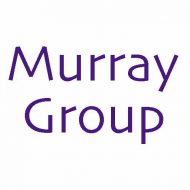B. Banstola, E.T. Grodner, F. Cao, F. Donnarumma, K.K. Murray, Systematic assessment of surfactants for matrix-assisted laser desorption/ionization mass spectrometry imaging, Anal. Chim. Acta. 963 (2017) 76–82. doi:10.1016/j.aca.2017.01.054.
Abstract

A systematic method for evaluation of MALDI profiling and imaging was developed and applied to the use of three surfactants, sodium dodecyl sulfate (SDS), Triton X-100, and Tween 20, on rat brain tissue. For profiling studies, mass spectra were acquired from regular arrays of spots with manually deposited surfactant and matrix. The studies recorded the total number of peaks in the mass spectra from 2 to 20 kDa and compared the number of peaks and peak intensities with and without surfactant. It was found that SDS decreases the total number of peaks at all concentrations but does lead to an increase in the number of peaks below 5 kDa. Triton X-100 at 0.05% concentration yielded the highest number of peaks and highest number of new peaks, with the best results above 5 kDa. Correlation of the increase in signal with the estimated hydrophobicity suggests that Triton X-100 improves mass spectrometry quality through an increase in the intensity of hydrophobic protein peaks. Tween 20 provided good performance at 0.05% concentration across all mass ranges. For imaging studies, multiple images were obtained and the integrated intensity ratio for images obtained with and without surfactant was compared for 10 selected peaks. It was found that SDS tends to degrade imaging performance whereas Triton X-100 and Tween 20 improved performance compared to no surfactant, especially above 7 kDa.

